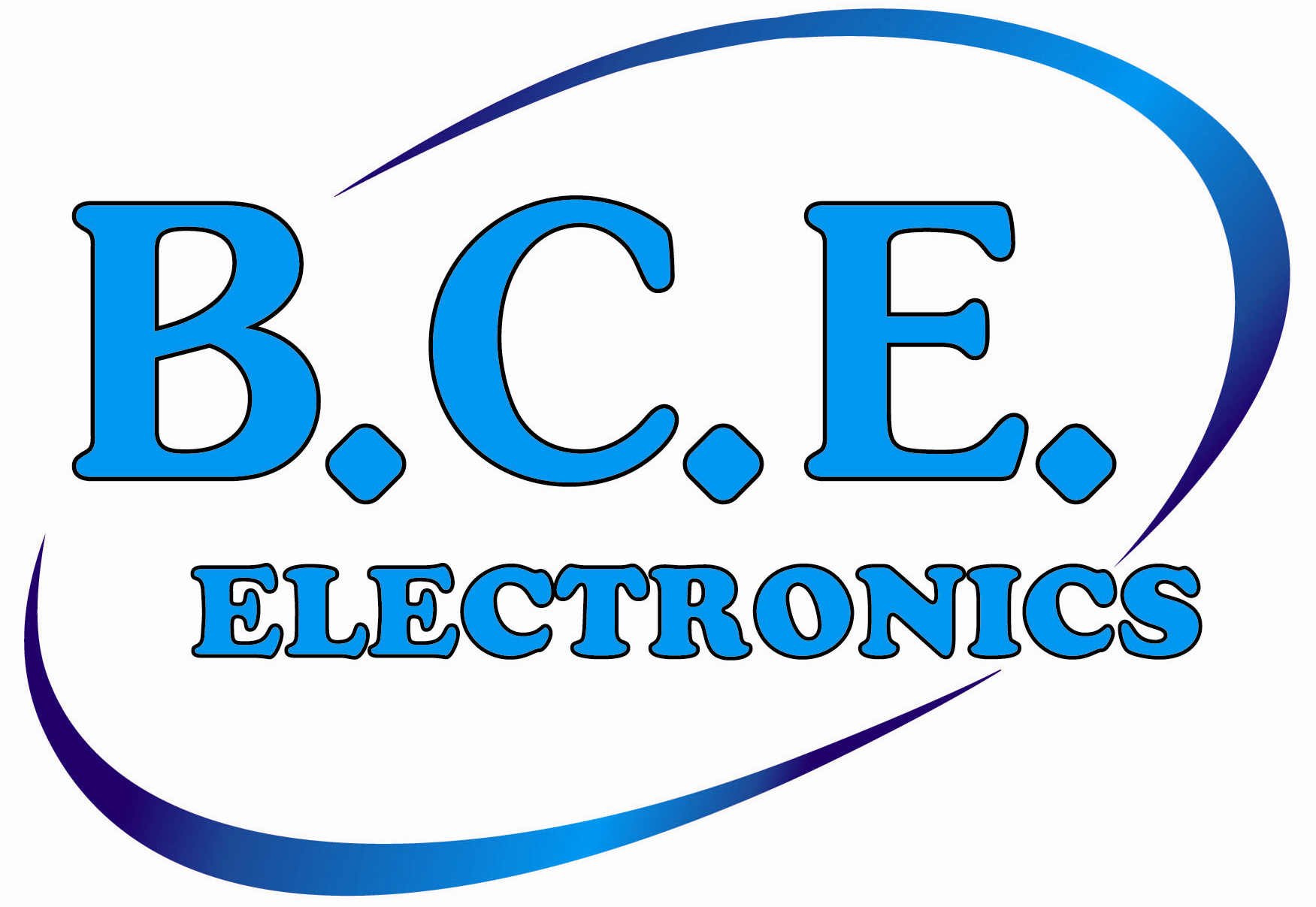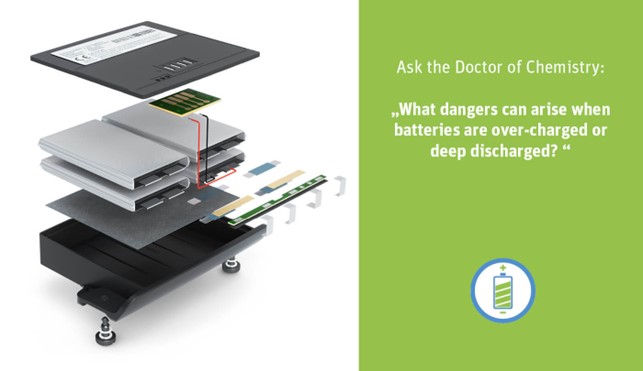Charging Process:
Lithium-batteries are charged with constant current until a voltage of 4.2 V is reached at the cells. Next, the voltage is kept constant, and charging continues for a certain time. The charger then switches off further charging either after a preset time or when a minimum current is reached. In the rare event that the charger does not switch off, for example continues to allow the charging current to flow, there is an electronic protection circuit and possibly a passive safety element located on the cell. These protective mechanisms ensure the safety of the user. But what dangers can arise when batteries are over-charged or deep discharged?
In order to operate lithium-batteries safely and optimize their life span, they should not be over-charged or deep discharged.
What happens when a battery is over-charged?
If neither the charger nor the protection circuit stops the charging process, then more and more energy enters the cell. As a result, the voltage in the cell rises – this is known as over-charging. On the one hand, this is harmful to the battery and bad for its life span. On the other hand, it can pose a safety risk for the user. The excess energy leads to heat generation. “In the worst case, this can lead to a so-called ‘thermal runaway’. This means that the temperature in the cell continues to rise and chemical reactions start from it, which proceed exponentially. These reactions can no longer be stopped. In the case of lithium-batteries, this can lead to the cell opening and possibly burning down. “With lithium-polymer batteries, it should also be noted that gas formation can occur in the cell, which leads to the severe swelling of the cell.” The next step would also be thermal runaway and, thus, burnout.”
And what about deep discharge?
This is referred to when the cell voltage drops significantly below the cut-off voltage. In itself, this phenomenon does not lead to any safety problems. However, it slowly destroys the cell’s performance, which can also cause the battery to swell under certain circumstances.
“If a battery does become deeply discharged, special care must be taken during the subsequent recharge. With the aid of very low current, an attempt must be made to rebuild the basic voltage so that charging can then resume normally from 3 V”.
Key take-away:
Users must therefore ensure that suitable chargers are used and to avoid damaging the devices and batteries. This ensures that the protective mechanisms can take effect in an emergency and prevents the dangers that can arise especially when lithium-batteries are overcharged.



















